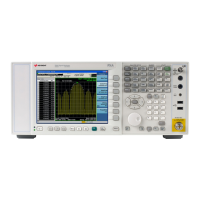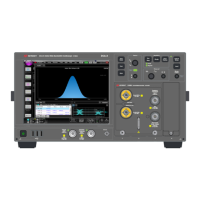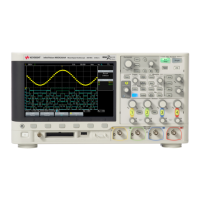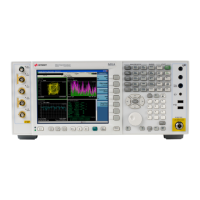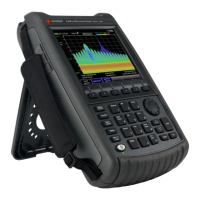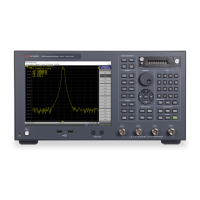3 VMA Mode
3.2 Custom OFDM Measurement
Example
:CALC:OFDM:MARK2:MAX
Notes Sending this command selects the subopcoded marker
Next Peak
Moves the selected marker to the peak that is next lower in amplitude than the
current marker’s value. Only peaks that meet all enabled peak criteria are
considered. If there is no valid peak lower than the current marker position, a “No
peak found” message is generated and the marker is not moved.
In the Digital Demod measurements, if the format is complex (vector or
constellation) then the marker moves to the closest point that has a lower
magnitude than the marker’s current position.
If the selected marker was Off, then it is turned on as a Normal marker and a peak
search is performed.
Remote Command
:CALCulate:OFDM:MARKer[1]|2|…|12:MAXimum:NEXT
Example
:CALC:OFDM:MARK2:MAX:NEXT
Notes Sending this command selects the subopcoded marker
State Saved Not part of saved state
Next Higher Amplitude
Moves the marker to the peak next higher in Y value than the peak it is currently on.
If the format is complex (vector or constellation) then the marker moves to the
closest point that has a higher magnitude than the marker’s current position. If this
function is invoked via SCPI on a marker that is Off, the result is the same as if you
sent a Peak Search command.
Remote Command
:CALCulate:OFDM:MARKer[1]|2|…|12:MAXimum:PREVious
Example
:CALC:OFDM:MARK2:MAX:PREV
Next Pk Right
Moves the selected marker to the nearest peak right of the current marker that
meets all enabled peak criteria. If there is no valid peak to the right of the current
marker position, a “No peak found” message is generated and the marker is not
moved.
If the selected marker was Off, then it is turned on as a Normal marker and a peak
search is performed.
481 Vector Modulation Analyzer Mode User's &Programmer's Reference
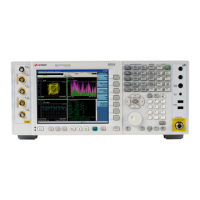
